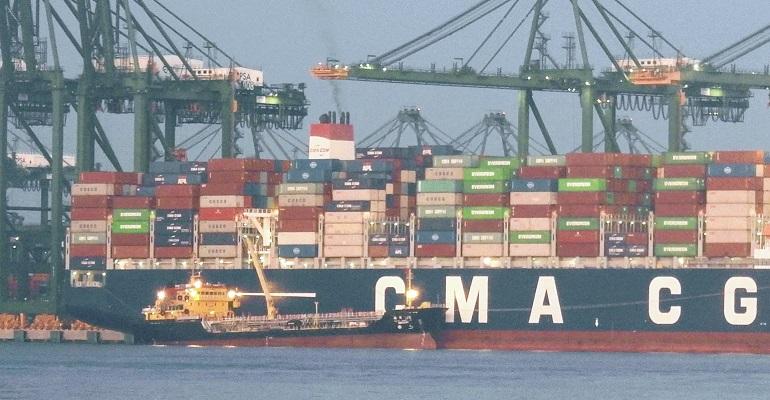Total bunker output last year for the top 17 supply countries and regions was just under 141 million tonnes (mt), according to a presentation given by Minerva Bunkering CEO, Tyler Baron at the Fujairah Bunkering and Fuel Oil Forum (Fujcon 2023) on Tuesday.
Minerva’s data show that the top 17 bunkering locations account for 61% of the global market of 230m mt. Baron said 75%, or 174m mt was ‘mapped’ demand, while the rest, or 56m mt, was ‘other’ demand.
Of the top 17 bunkering destinations with Singapore holds 36% a share, the Amsterdam-Rotterdam-Antwerp (ARA) region 11% and Fujairah 6%. Although spread through diffuse locations, the Strait of Gibraltar and the US Gulf Coast were also notable hotspots, with both locations also taking 6%.
Singapore saw 50 million metric tonnes (mt) of demand last year, China, 17m mt, ARA 15.1m mt, the UAE 9.5m mt, the Strait of Gibraltar 9m mt and the US Gulf Coast 8.4m mt.
| Market | Tonnes per year sold |
Share of top 17 bunkering markets |
| Singapore | 49,988,000 | 36% |
| ARA | 15,116,000 | 11% |
| Gib Straits | 8,950,000 | 6% |
| US Gulf Coast | 8,400,000 | 6% |
| Fujairah | 7,775,000 | 6% |
Table based on data from Minerva
“Global bunkering markets are fragmented,” Baron told the conference. “Outside of Singapore, no individual port contributes greater than 6% of global bunker volume.”
In terms of individual ports Seatrade Maritime News understands that Rotterdam retains its No.2 position, while Fujairah is third largest single location. Minerva’s figures skew the data by presenting certain regions as single locations.
Baron said annual industry turnover of $130bn required around $17bn to $20bn in primary working capital financing. Total credit demand had fallen by around $3bn of late, driven by the lower flat price, while an increase of $900m in primary financing costs translated to the equivalent of around 4m mt. Base financing rates had increased by over 4%.
Industry-wide over-reported vessel consumption of around 2% amounted to over 14m mt of false CO2 emissions, Baron said. At an EU ETS value of $100 per mt, this represented $1.4bn of lost value annually when carbon was fully priced.
Lost Time inefficiencies in bunkering operations, measurement and documentation resulted in over 1.3m hours lost annually, amounting to a gross value of over $2.2bn annually. The working capital cycle also cost the bunkering industry around 1.5bn annually.
He also said quantity shortages were endemic in the bunkering industry, with global averages estimated at 2% to 4% of purchased volume. “This represents $2.6bn to $5.2bn of losses annually,” he said.
Minerva has spun off its ADP Clear unit, an integrated platform that claims to provide transparent and efficient bunker delivery services, into an independent company, to provide technology to all bunker suppliers. He said it had delivered 1.6m mt across 2,000 deliveries on the platform.
According to Ship and Bunker, Minerva was the third-largest provider of marine fuels in 2022, at 16.5m mt, after Bunker Holding, 30m mt and World Fuel Services, with 19.1m mt.
Copyright © 2024. All rights reserved. Seatrade, a trading name of Informa Markets (UK) Limited.
Add Seatrade Maritime News to your Google News feed.  |

